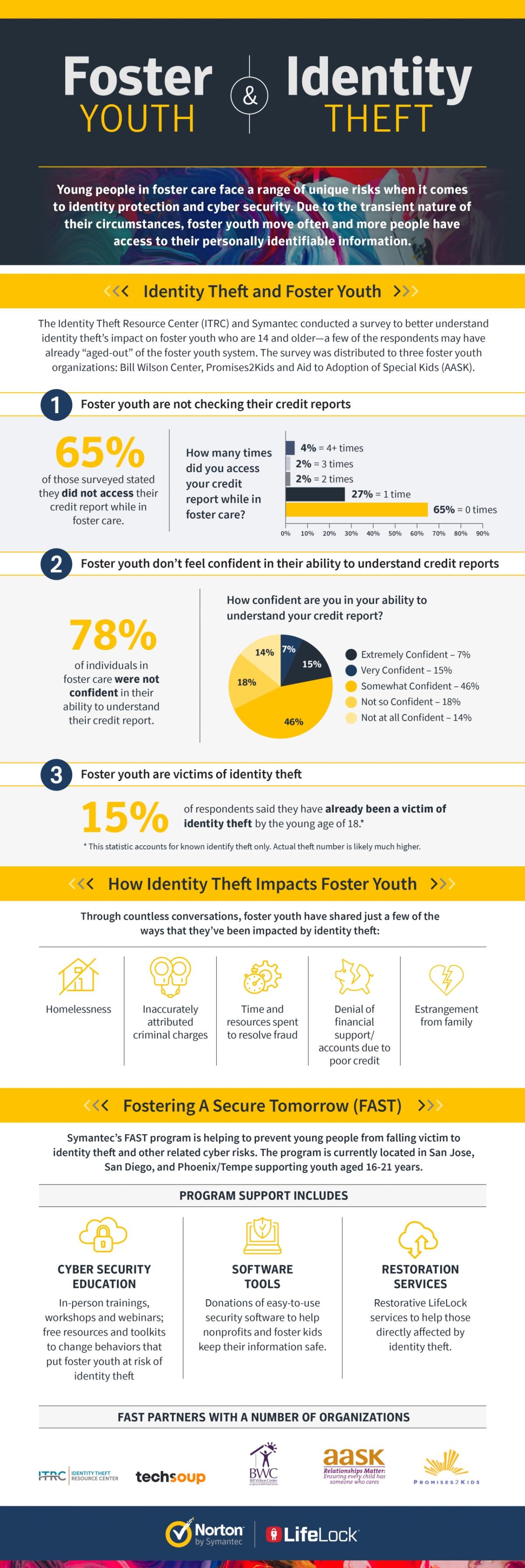The Impact of Identity Theft on Foster Youth
Symantec and Identity Theft Resource Center release 2018 trend analysis on this important issue

Originally published on Symantec Blog | Corporate Responsibility
By Tess Hetzel, Sr. Corporate Responsibility
Statistics on identity theft among foster youth are difficult to find, likely because most regions do not track identity theft within foster care systems. Given this reality, and the lack of information in general, Symantec and The Identity Theft Resource Center conducted a survey to better understand identity theft’s impact on foster youth who are 14 and older.
The survey was distributed to three foster youth organizations Bill Wilson Center, Promises2Kids and Aid to Adoption of Special Kids (AASK) which are participating in Fostering A Secure Tomorrow (FAST), a Symantec Corporate Responsibility initiative launched in 2018 to curb the risk of identity theft faced by foster youth. This survey, which examines a small population of foster youth in California and Arizona, provides a basis for evaluating trends in behavior and habits on this topic.
Children have always been an attractive target for identity thieves because their credit reports are clean and are often left unmonitored for many years, providing ample time to cause substantial damage to the child’s credit.
Foster youth are even more vulnerable to becoming victims of identity theft because they face unique risks when it comes to identity protection and cyber security. For instance, as they go from one home to another, an expanding group of adults gain access to their private information (sensitive health information and personally identifiable information (PII)). This information is also stored in case management software and is typically accessed by several adults during their time in care, opening up opportunities for misuse.
As Ty Shay, SVP and CMO of Norton & LifeLock told media outlet TriplePundit last month, “no one has a vested interest in their identity.”

